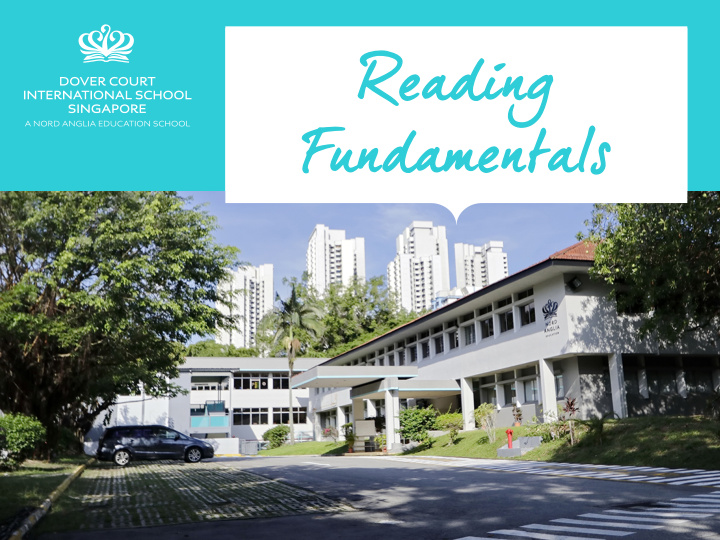



Readi Reading ng Funda Fundamen menta tals
What is “Reading Fundamentals”? § Reading Fundamentals is the scheme we use at DCIS to help our children to become great readers and writers. § It consists of four parts: Synthesis (blending) this skill helps us to read c-a-t = cat Segmentation this skill helps us to spell cat=c-a-t § It uses a combination phonics and High Frequency words § Phonics § Sight words 2
What are Phonics? § Phonics is a method for teaching reading and writing of the English language by developing learners' phonemic awareness —the ability to hear, identify, and manipulate phonemes—in order to teach the correspondence between these sounds and the spelling patterns (graphemes) that represent them. § You may have heard of Letterland, Jolly Phonics and many other schemes. 3
Have a go at these words … § bat § pen § tin § sand § his 4
What are ‘pure sounds’? § This is also called ‘perfect pronunciation’ § It is important to say the pure sounds when synthesising or segmenting so that the words can be said or spelt correctly. § It is common for sounds to be pronounced with an added –uh; § If you hear your child doing this gently correct them by modelling the correct way. § We have produced a booklet for you to use- this includes a QR code with the ‘pure sounds’. Sounds man can sad bat cap men hen beg yes peg sit big bin zip win got box mop hot job cut sun bus but fun 5
Have a go at these words … § the § she § although § christmas 6
What are High Frequency/Sight words? § Sight words , often also called high frequency sight words , are commonly used words that young children are encouraged to memorize as a whole by sight , so that they can automatically recognize these words in print without having to use any strategies to decode. § These 100 words make up 50% of what we read. § Some of these words can be read phonetically but most can’t. § These should be learned by rote. 7
What does it look like in practice? 8
Differentiation How do we create scheme that will fit the needs of all children? § Children are assessed each half term. § They are then placed in a group that best fits their needs. § During the sessions the children will work on a range of skills with the Spelling teacher. § We use Visual, Auditory and Kinesthetic methods to help the children retain the words. § For us to know the children are able to spell the words, they should be able to use them in their written tasks. § Patterns and words may be revisited to ensure that they have become embedded in the child’s written vocabulary and that they are confident to use them. § These words are sent home each week for you to practice with your child to help further consolidate their learning. 9
What can you do to support your child at home? § Read everything you see and encourage the children to do so too. § Use fun and inventive ways to practice the spelling words with your children will help them to retain their interest. § For younger children, encourage them to use their bodies to make the letters before building up to writing. § If you notice a spelling word when sharing a book with your child, point it out and explain its meaning in the context. § Revisit spelling patterns previously covered. § Share a book for enjoyment with your child. Ask your child to help you choose a book from the local library, their home library or from school that they are excited to read. § Books do not always have to challenge a child. Encourage them to just read and explore the story. § Have a certain time that you read or do homework with your child. Try to make sure they are not tired. § Role model reading books, newspapers and magazines for enjoyment. § Ask your child to discuss what they have read and ensure they have fully comprehended the story. We will be sending home a some questions to help with this soon. 10
Tha hank you nk you www.nordangliaeducation.com
Recommend
More recommend